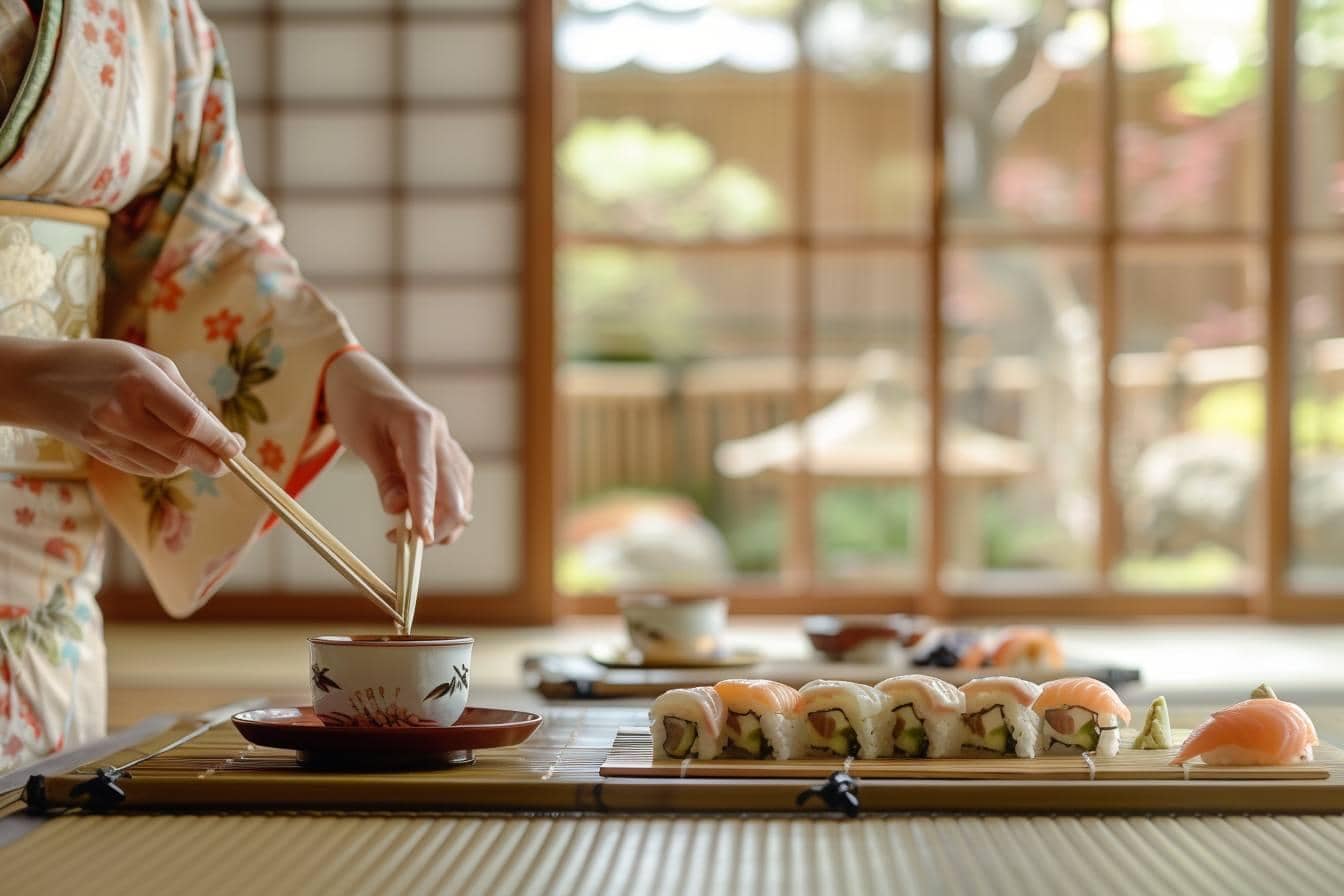Exploring Japan’s rich culture and traditions is a journey into a world where etiquette plays a vital role in social interactions. As a digital nomad who’s spent considerable time traversing the globe, I’ve encountered a myriad of customs and etiquettes, but none quite as nuanced and fascinating as those in Japan.
As someone deeply interested in understanding and respecting the cultures I immerse myself in, I’ve taken it upon myself to share insights into the art of Japanese etiquette.
From removing shoes indoors to mastering chopsticks, these cultural nuances are not just about manners but about showing respect and appreciation for Japanese tradition.
In this article
- Mastering the art of proper bowing
- Embracing the ritual of removing shoes indoors
- Refining table manners and chopstick etiquette
- Navigating public spaces with grace
Mastering the art of proper bowing
Bowing in Japan goes beyond mere formality; it’s a profound expression of respect, gratitude, and greeting. During my travels through Japan, I quickly learned that the subtleties of bowing can communicate much more than words ever could.
From the slight nod of the head to a deep bend at the waist, the angle and duration of a bow express different degrees of respect and intention.
I learned from the locals that the context in which you bow is just as important as how you bow. For instance, a light bow is customary when saying thank you for a meal (itadakimasu before eating and gochisōsama deshita after). In contrast, a deep bow might be reserved for formal apologies or when meeting someone of higher status.
As a developer interacting with Japanese clients, understanding the etiquette of bowing has been invaluable in the professional world. It’s not just about showing respect; it’s about demonstrating your awareness and sensitivity towards Japanese culture.
Embracing this practice has helped bridge cultural gaps and foster a deeper connection with the people I meet in Japan.
Embracing the ritual of removing shoes indoors
The Japanese practice of removing shoes before entering a home, certain restaurants, and temples is a custom steeped in practicality and respect. On my first visit to a traditional Ryokan, I was reminded of the importance of this ritual. It signifies leaving the dirt and chaos of the outside world behind and entering a clean and sacred space.
Personal experience has taught me that forgetting this rule is rude and can even lead to embarrassing situations. I remember mistakenly walking into a tatami room with my shoes on, only to receive gentle corrections from my hosts. This experience underscored the deep cultural significance of cleanliness and purity in Japan.
In homes and specific accommodations, you might be offered slippers to wear indoors, but remember, these should never be worn on tatami mats—a rule I learned quickly. The distinction between indoor and toilet slippers is another nuance I found intriguing. This differentiation further emphasizes the Japanese dedication to cleanliness and order within their living spaces.

Refining table manners and chopstick etiquette
Japanese dining etiquette is an intricate dance of culture, respect, and tradition. During my various culinary adventures, from high-end sushi restaurants to local izakayas, understanding and adhering to Japanese table manners significantly enriched my dining experiences.
Using chopsticks correctly is paramount. Some key rules include not sticking chopsticks upright in a rice bowl, not passing food directly from your chopsticks to someone else’s, and placing them on a chopstick rest when not in use. Following these guidelines shows respect for Japanese customs and your fellow diners.
Moreover, gestures such as saying itadakimasu before a meal and gochisōsama deshita after eating are more than mere politeness; they’re expressions of gratitude for the food and those who prepared it. Learning these expressions has allowed me to show significant appreciation within the Japanese context.
| Etiquette Rule | Description |
|---|---|
| Bowing | A form of greeting, thanking, or apologizing, the depth and duration of which communicate the level of respect. |
| Removing Shoes Indoors | A practice signifying respect for the cleanliness and sanctity of the home or certain establishments. |
| Chopstick Use | Rules include not sticking chopsticks upright in rice, not passing food directly, and using chopstick rests. |
| Table Manners | This includes expressions of gratitude before and after meals and adhering to specific dining etiquettes. |
Navigating public spaces with grace
In Japan, respecting personal space and maintaining harmony in public settings guide everyday interactions. From the silent carriages in trains to the orderly queues at bus stops, the collective effort to ensure a pleasant environment for all is palpable.
My first encounter with Japan’s disciplined approach to public transport was an eye-opening experience. The quietness in trains, even during peak hours, was unlike anything I had experienced in other countries. This respect for others’ space and peace is a testament to the Japanese value of wa (harmony).
Similarly, my reluctance to eat or speak loudly on the move taught me the importance of mindfulness toward others. This aspect of Japanese culture promotes a sense of togetherness and care for the community’s well-being, a lesson that has stayed with me long after I left Japan.
Understanding and adhering to Japanese etiquette doesn’t just make for smoother social interactions; it opens doors to a deeper appreciation and connection with Japanese culture.
As a digital nomad and traveler, the nuances of these practices have enriched my personal experiences and informed my professional interactions, highlighting the universal value of respect and understanding across cultures.




